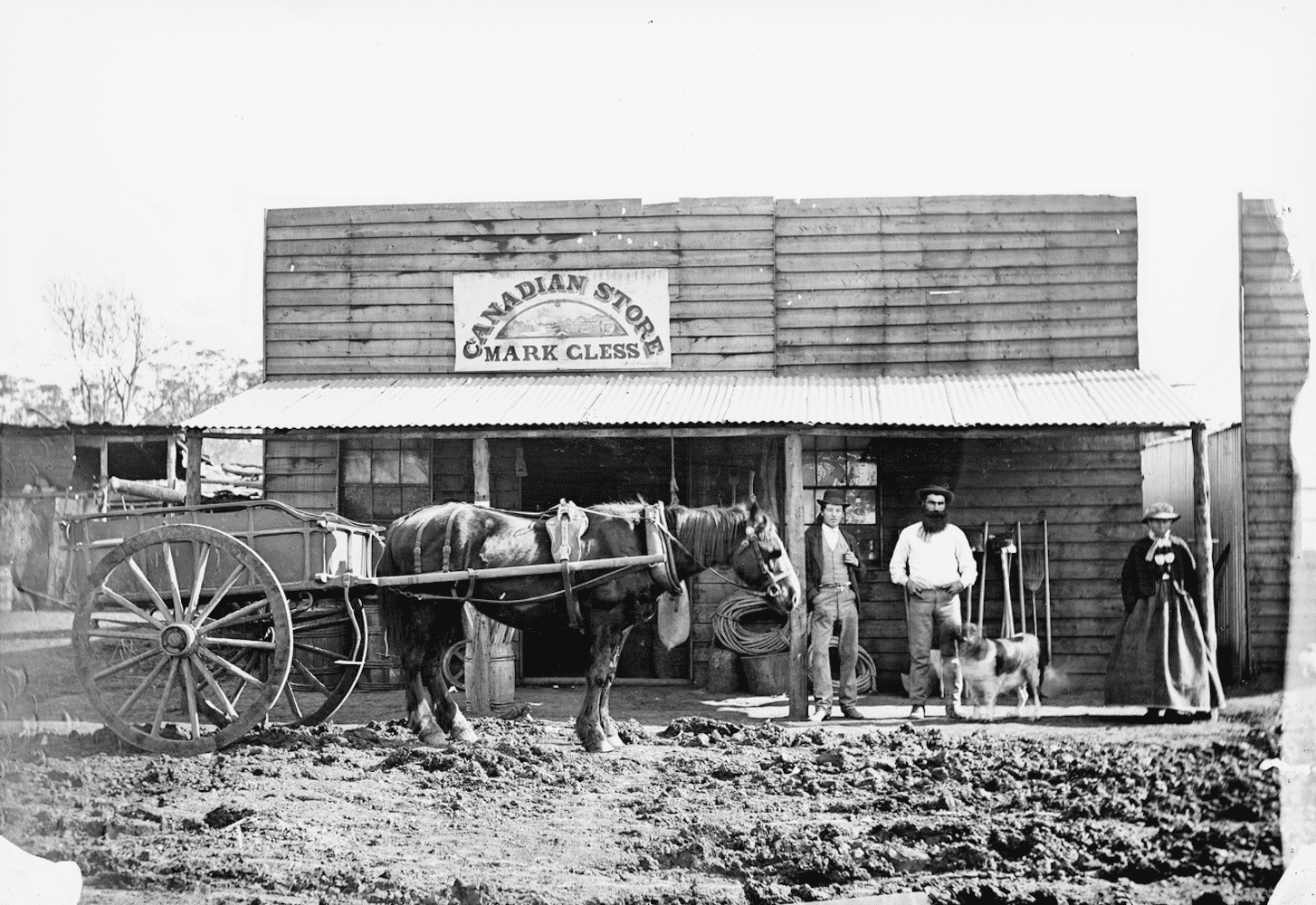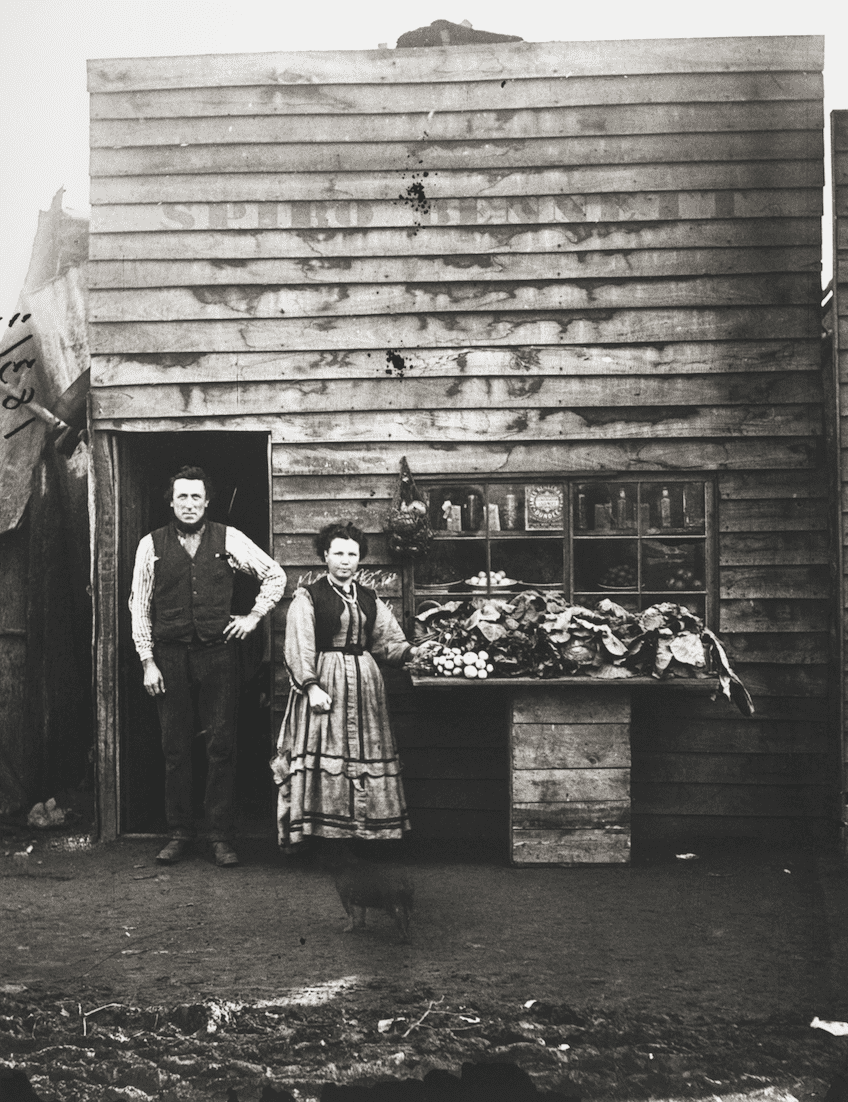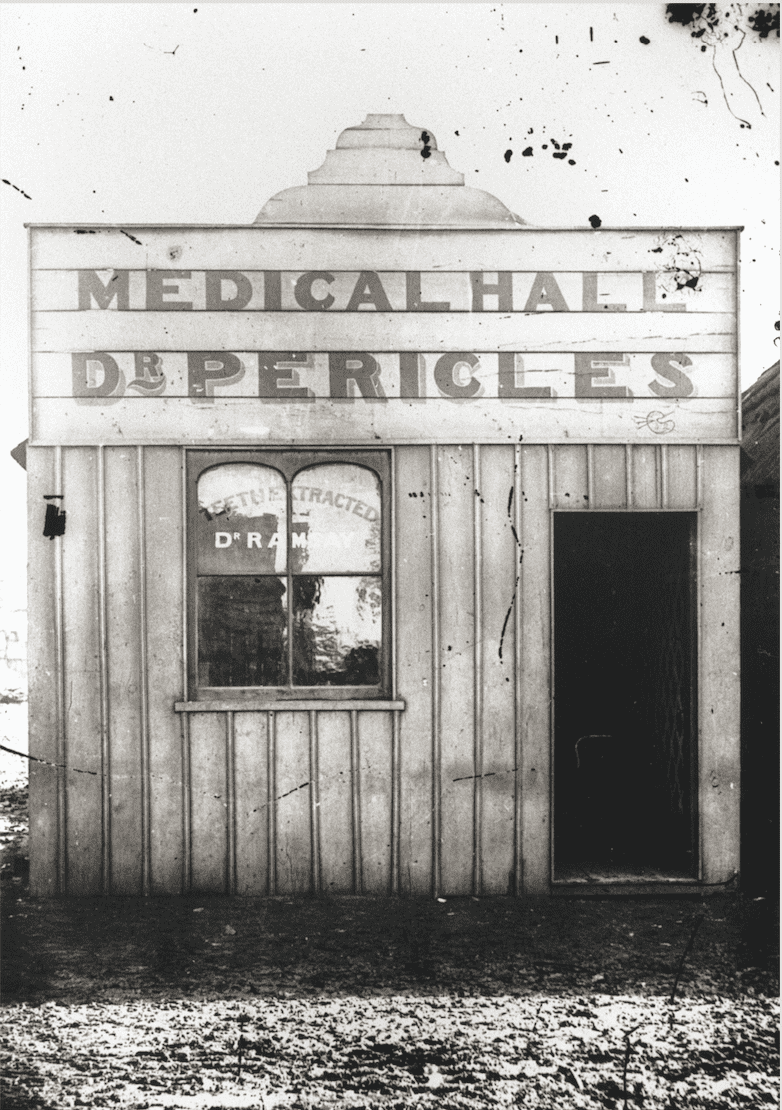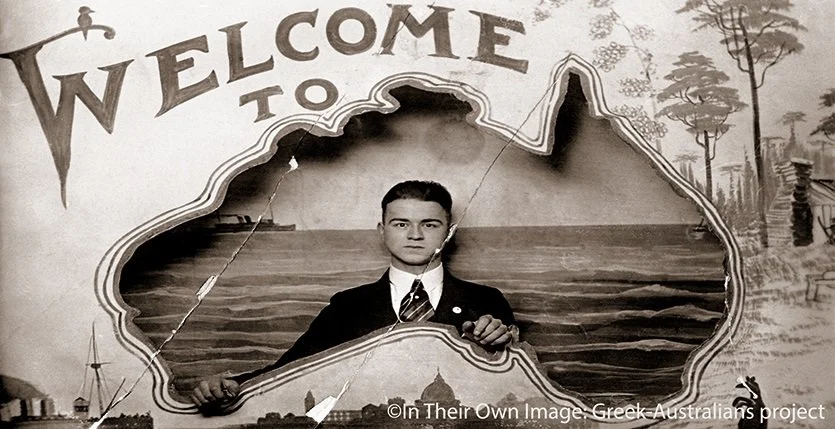Greek City Times is proud to present a weekly historical snapshot
from the archives of the ‘In Their Own Image: Greek Australians’ national project
by photographer Effy Alexakis and historian Leonard Janiszewski.
Not all ‘Golden Greeks’ became miners on the Australian goldfields of during the second half of the 19th century. A number utilised their acquired skills and knowledge to establish themselves as shopkeepers and service providers to the rapidly expanding populations on the fields.

Mark Gless (with black beard) is recorded as Greek storekeeper on the Gulgong goldfields in New South Wales. His Greek name is unknown. He was a hotel publican for a few months in Gulgong and then moved with the rush to nearby Canadian Lead, where he set up a store. He also acquired land in the area and is thought to have cultivated vegetables there for both private consumption and public sale – the Canadian Store not only provided mining goods to those on the fields but also essential food supplies.
During the 1870s, increased population and prosperity from the gold rushes witnessed a number of Greeks entering food services, not just on the goldfields. In Sydney, John Capatchos (Kapazzo/Kapazzos), became an oyster saloon keeper, a Corfiot named Spinelli opened a kafeneion and Athanasios Comino, originally from Kythera, began to sell fish and chips, oysters and coffee. In Victoria, Andreas Kourouklis, George Paxinos, Andreas Lekatsas, Andreas Lagoyiannis, Tony Meringa (also know as Miranda, a Greek-Cypriot), Grigorios Matorikos and Georgios Morfesis, all led the way for Greeks to become fishmongers, fruiterers, oyster saloon keepers, publicans and café proprietors. By the 1880s, Greeks in other states had also commenced what was to become a food-service phenomenon.

Noticeable Greek involvement in the Australian food trade industry – retailing and catering – commenced during the gold rushes of the 1850s to the 1880s. Spiro Bennett was one of a number of gold-rush Greek settlers who engaged in food retailing.
Like so many of his countrymen during the Australian gold rushes, Spiro anglicised his surname, or adopted a new one, so as to ensure easier acceptance into the host culture. Spiro, who was born on Kefalonia, married Ann Jane at Gundagai, New South Wales, in 1866. By 1872 the couple had moved to Gulgong. Realising that goldmining was a lottery and that luck played a major hand, Spiro saw the potential of entering the commercial field of servicing miners’ material needs. Traders and storekeepers were needed to supply food and goods to the mining population on the goldfields. The fresh vegetables displayed outside his store window probably came from his own market garden.

Dr Pericles Medical Hall, Herbert Street, Gulgong, NSW, 1872. (Photo by Beaufoy Merlin and Charles Bayliss, Holtermann Collection, Mitchell Library, State Library of NSW)
Dr John Pericles graduated in medicine from Athens University under the name of Ioannis Periklis Rodokanakis. He undertook further studies at Smyrna, Asia Minor, immediately after. Preceded by Dr Spyridon Candiottis – who had arrived in Melbourne in 1853 – Dr Pericles is currently considered to be the second Greek doctor to have established a practice in Australia. He arrived in Melbourne in 1858 and had moved to New South Wales by the mid-1860s. In June 1867, Dr Pericles was operating a Medical Hall in Grenfell’s George Street – a year after a major gold rush to the district had taken place. He is listed in Government Gazettes as an ‘unregistered doctor’. By August 1867, he had established a Medical Hall at the Seven Mile Rush, just north of Lambing Flat (present-day Young). It appears that he stayed there till November 1868. In that year, at the age of thirty-four, he married twenty-six-year-old Mary Emma Mabel Barnett Williams. The couple had five children: Mary, Adelaide, Arthur, Emma and Dagmar. By the early 1870s Dr Pericles and his wife had settled in Gulgong (the gold rush town featured on the reverse face of the original Australian $10.00 note) where he took up a practice with a dentist – Dr Wilson Ramsey. Dr Pericles and Mary later moved to Rylstone, south-east of Gulgong. Naturalised in 1903, Dr Pericles died in Sydney in 1907.
Photos: Effy Alexakis
Historical Research: Leonard Janiszewski
© In Their Own Image: Greek-Australians National Project Archives
ABOUT EFFY ALEXAKIS & LEONARD JANISZEWSKI
Since the early 1980s, Effy Alexakis, a photographer, along with historian researcher Leonard Janiszewski, have been travelling around Australia photographing and collecting stories. They have also photographed Greek-Australians in Greece and documented some amazing histories. The images and text provide personal, diverse and powerfully moving insights, about opportunities, hopes and challenges. Collectively, these stories provide personal perspectives of a diasporic Hellenic identity. Their archive encompasses photography, both historical and contemporary, taped interviews and literary materials.
They have published 3 books and numerous articles, and their projects are ongoing. The photographs have been widely exhibited throughout Australia and in Greece.
VISIT THEIR LATEST PROJECT: Greek Cafés & Milk Bars of Australia | Facebook


